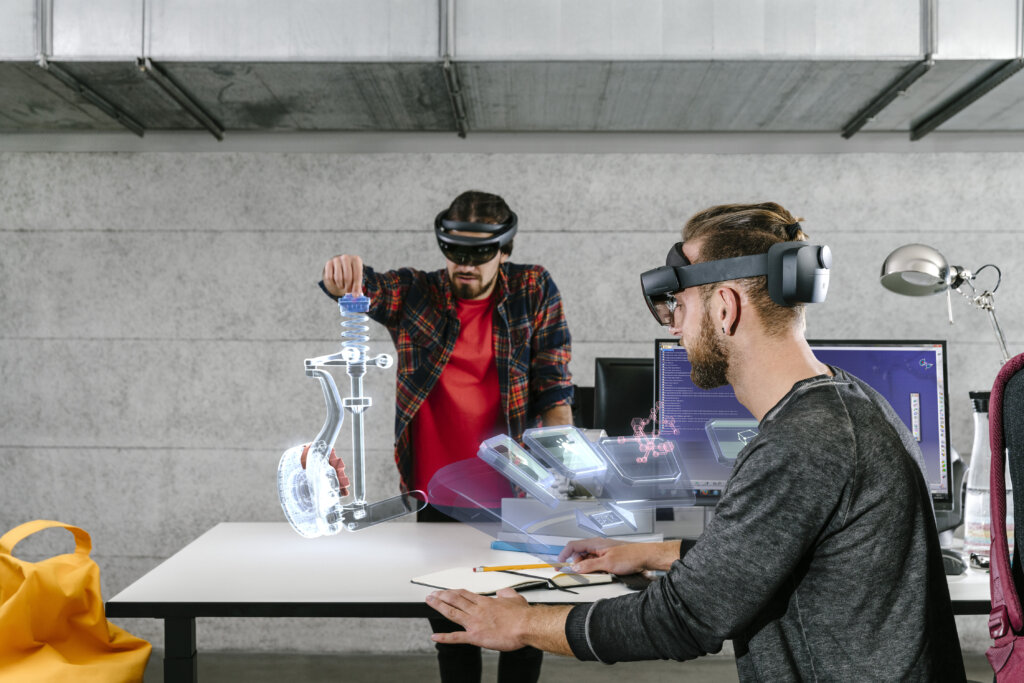Are We Ready for the Full Potential of Remote Collaboration?
One could say that the foundation for a remote work cultural shift is laid: The changeover to home office amid the pandemic, let general acceptance for remote collaboration grow. Teams, Webex, Zoom or Slack are part of our daily office life, simplify communication but also reach their limits. Now, the efficient usage of XR will bring remote collaboration to the next level.
Business leaders are obsessed with parameters such as productivity, cost reduction, faster time to market and innovation. However, the current crisis showed us that we didn’t think through certain factors yet. One of them is remote collaboration: its “reengineering” is an important puzzle piece to make businesses more efficient.
Virtual communication tools such as Teams, Zoom or Slack increase the productivity of geographically dispersed teams. But with their widespread use, also limitations of these tools become increasingly apparent. For example, can creative exchange as well as the transfer of ideas and knowledge be successfully transferred via 2D screens? There are many business cases, where 2D screens are barriers and stand in the way of successful remote collaboration.
Collaborating and Socializing in an Immersive Way
XR gives remote collaboration an extra dimension. Virtual interaction with others becomes more natural and substantial, when there is a shared virtual space, where teams or stakeholders can come together via smart glasses regardless of location.
By now, the XR market offers various solutions. Companies such as Spatial or AltspaceVR advanced social gathering in XR. Users appear as holograms with real faces and even lip motions in a virtual meeting room, which gives remote work a new natural feeling. Especially for departments, which feed off face-to-face interaction such as Sales – this can be totally valuable. Or also brainstorming sessions can be done in a more “present” way.
But what if communication is based on a complex object? And colleagues from different departments would like to discuss the latest product design remotely? When work is less about social gathering and more about the “thing” itself, it needs to be present and editable in the course of the virtual meeting.
Currently, most enterprises are not looking for a platform to support a social gathering. They are looking for a productive and efficient communication and collaboration platform replacing a real-world meeting as good as possible. It’s about value and benefit while social gathering plays an important but not the primary role.
Specialized XR Collaboration Tools
In the industrial sector certain companies already have understood that XR collaboration offers a competitive edge if it is implemented and used correctly. Certain solutions already serve specific industries and meet their requirements in terms of business processes and data protection.
At Holo-Light, we have been developing and refining the AR Workspace for several years now. By means of its multi-user function, a whole group of employees can come together for a virtual engineering session and work on an identical 3D object together – regardless of their location.
Users can easily examine internal structures with a magnifying glass, scale single components or put a cutting plane through their model. All changes discussed in the session or markings on the digital 3D model can then be seamlessly integrated into the corresponding tools of further workflows.

The use case, value and benefit of the solution is in focus, the ability to share my work with others is the necessary next step to enable an independent and global collaboration environment.
Various use cases can be derived from this. The automotive industry is already using AR its prototyping. A design review in the form of an Augmented Reality session has the additional advantage that inconsistent details or easily overlooked design errors in the model become easily visible and modifiable. Companies save their resources and make the production process more efficient.

Conclusion
Zoom, Teams or Webex are just the beginning of remote collaboration. XR will further advance virtual teamwork. For now, XR is not to be seen as a substitute for online conferencing. But interacting in a 3D spatial context is a powerful alternative to empower existing or enable new business use cases. The industrial sector started adopting this new way of collaboration and one thing became clear: Our collaboration becomes stronger, if we unite ourselves across time and space.


